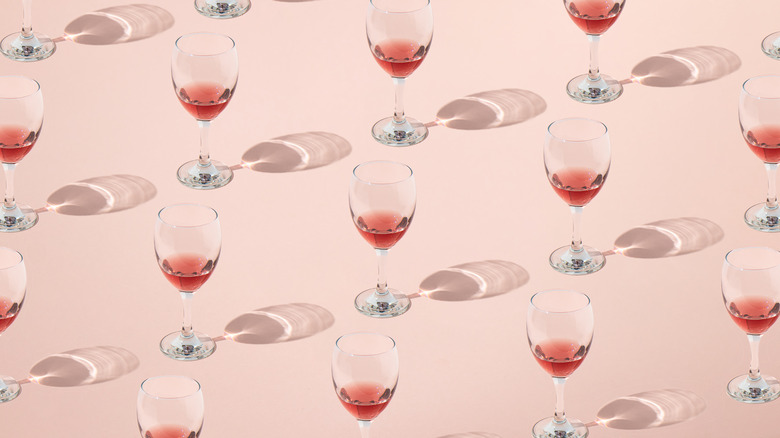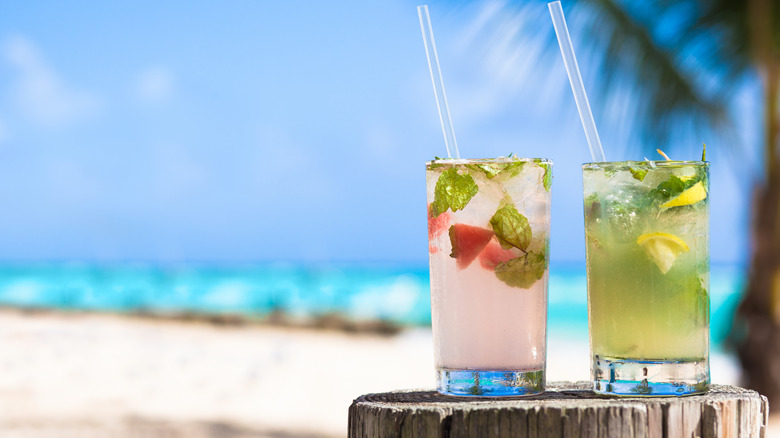The Hack That Turns Bad Rosé Into Fancy Cocktail Syrup
We may receive a commission on purchases made from links.
Although pink wine has been around since the sixth century B.C., rosé wasn't fully appreciated until recently, per Food52. Perhaps it was because most people associated the wine with Sutter Home's "White Zinfandel," released in 1975. This sweet wine, an introduction to the world of wine for some, was a hit throughout the 1980s. However, serious wine drinkers and restaurant sommeliers didn't embrace rosé until the early 2000s. At that time, resorts around the U.S. began their aprés beach rituals by serving French rosés with notes of florals and fruit to thirsty beachgoers. Those photogenic moments were caught on camera, and rosé sales took off; after all, that color was made for Instagram.
There is something celebratory about a glass of rosé. That subtle pink color has a way of making you happy well before your second glass kicks in and the next thing you know you're shouting, "Rosé all day!" With many wineries worldwide producing a blend, there is a bottle at every price point. According to Food & Wine, you can get a decent bottle of rosé for as little as $15.
Occasionally when you venture outside of the usual selections, you may end up with a bottle that doesn't appeal to you. That can happen at all price points and with all varieties. Rather than toss the bottle, there are some creative hacks for home mixologists to try out.
How to make your own rosé simple syrup
Luckily, there's a way to turn that lackluster rosé into a syrup that both transforms seltzer water and adds a beautiful hue to cocktails. Life Hacker put together a short video demonstration. Just as you would make a homemade simple syrup, you add equal parts rosé wine and granulated sugar to a pan and bring the mixture to a boil. Stir the liquid until the sugar has dissolved, then allow it to cool and thicken. The syrup can be stored in an airtight container in the refrigerator for one month.
Cocktails requiring a sweetener rely on simple syrups to keep their spirits free of a gritty texture. Anyone attempting to add sugar to an iced tea knows that sugar added to a cold drink doesn't fully dissolve, leaving you with a grainy drink that hasn't been sweetened. When a cocktail calls for simple syrup, you can easily swap in rosé syrup. A lemon drop would be delicious with rosé syrup, not to mention pretty. You can think beyond cocktails too. The syrup can also be used for flavoring anything from ice cream to sorbets as well as for sweetening cakes and even your iced tea (via MasterClass).
Although rosé can be enjoyed any time of the year, it is synonymous with the summer months when the weather is warm. The next time you are outside about to enjoy a cocktail, say yes way to rosé. Cocktail hour will welcome the change.

